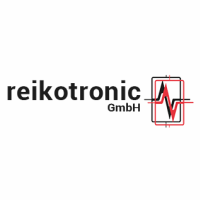Responsibility Center Definition, Examples Overview of Top 4 Types
By attributing certain functions and tasks to individual Responsibility Centers, organizations can more easily identify strengths, weaknesses and opportunities. Managers of these centers can decide on the best strategies to enhance efficiencies or address shortcomings, thereby contributing to the company’s overall strategy and goals. By creating Responsibility Centers, businesses are better equipped to monitor costs, revenues, investments, and profits tied to specific divisions.
Recall from Building Blocks of Managerial Accounting that variable costs, unlike fixed costs, change in proportion to the level of activity in a business. Therefore, it should be no surprise that the expenses in the children’s clothing department also increased. In fact, the expenses increased \(\$25,309\) (or \(21.4\%\)) versus the budgeted amount.
The upgrade would make the customer shopping experience more enjoyable for everyone. The children’s clothing department contributed the most to the financial position of this Apparel World location (\(\$3,891\) vs. \(\$2,533\)). In addition, the children’s clothing department was able to better leverage every dollar invested into profit. Stated differently, for every dollar invested, the children’s clothing department was able to realize \(\$0.259\) of profit while the women’s clothing department realized only \(\$0.039\) of profit for every dollar invested.
Requisites of Effective Responsibility Accounting
Management was pleased to learn that clothing revenue exceeded expectations by \(\$30,000\), or \(20.7\%\). A product based company may treat various individual departments as cost centre units wherein the respective managers act as cost centre managers. These managers further report to the plant manager regarding cost-related matters. Or, there can be a dedicated department which handles the cost operations of all other departments working in the organisation. Responsibility accounting involves gathering and reporting revenues and costs by responsibility centers.
Because segmental earnings equal segmental revenues minus related expenses, the manager must be able to control both of these categories. The manager must have the authority to control selling price, sales volume, and all reported expense items. To properly evaluate performance, the manager must have authority over all of these measured items.
- Students will be able to understand the topics precisely by adhering to the study material prepared by experienced tutors.
- Advanced software solutions like SAP, Oracle Financials, and Microsoft Dynamics can be instrumental in automating this process, ensuring that data is consistently accurate and up-to-date.
- The performance evaluation is done on the basis of the actual cost that occurred and the targeted cost.
- Examples include departments like maintenance, human resources, and research and development.
- The Women’s Department added more value (\(\$61,113\)) to the store’s financial position, while the Children’s Department was more efficient, converting \(13.5\%\) (or \(\$0.135\)) of every dollar of revenue to profit.
Responsibility Accounting: Types, Features, Objectives, Examples & Advantages
A responsibility center is an organizational unit or department to which management delegates specific responsibilities and objectives. These units are accountable for their performance in achieving these objectives and are evaluated based on their results. These are segments in which managers are responsible for costs incurred but have no revenue responsibilities. The performance of each cost centre is evaluated by comparing the actual amount with the budgeted/standard amount. Such centres may be made according to location or person or service or type of product. An investment center is a responsibility center having revenues, expenses, and an appropriate investment base.
Performance Measurement Techniques
- In RI scenarios, the investment refers to a specific project the segment is considering.
- This led to an increase in custodial wages of \(\$500\) compared to the budgeted or expected amount, which was established based on the previous year, when snowfall in the area was closer to average.
- These units are accountable for their performance in achieving these objectives and are evaluated based on their results.
- Managers in investment centers must not only generate profits but also ensure that the capital employed is yielding satisfactory returns.
Implementing a responsibility accounting system requires a thoughtful approach that integrates seamlessly with an organization’s existing structure and culture. The first step is to clearly define the various responsibility centers within the organization. This involves identifying which segments will function as cost centers, revenue centers, profit centers, or investment centers. Each center should have well-defined objectives and measurable performance metrics that align with the company’s overall strategic goals. This clarity ensures that every manager understands their specific responsibilities and the criteria by which their performance will be evaluated.
Performance is assessed by analyzing profit margins, return on sales, and overall profitability. This dual focus encourages managers to balance cost efficiency with revenue generation, fostering a more holistic approach to business management. Profit centers are instrumental in aligning operational activities with the company’s financial objectives. A responsibility center is a segment of an organization for which a particular executive is responsible.
Challenges in Responsibility Centers
A responsibility center is a functional entity within a business that has its own goals and objectives, dedicated staff, policies and procedures, and financial reports. It is used to give managers specific responsibility for revenues generated, expenses incurred, and/or funds invested. This allows the senior managers of a company to trace all financial activities and results of a business back to specific employees.
These tools also offer customizable dashboards and analytics, providing managers with real-time insights into their performance metrics. Responsibility accounting often entails the creation of monthly and annual budgets for each responsibility centre. It also keeps track of a company’s costs and revenues, with reports compiled monthly or annually and sent to the appropriate manager for review. Because the store also sells accessories such as belts and socks, the children’s clothing department tracks two revenue sources (also called streams)—clothing and accessories.
A responsibility centre is a subdivision or subsection present in an organisation which has a specific task or goals assigned to them. The entire team works on these goals and concentrates on their key responsibilities to fulfil organisational goals. The entire team works upon the sales strategy and marketing tactics so that they can improve the earned profit percentage. So, departments handling tasks of sales and expenses are a part of the profit centre. Investment centres are the subgroups in an organisation which is responsible for making any investment-related decisions.
Investment center – A subunit that has control over revenues, costs, and investments (assets such as receivables, inventory, fixed assets, etc.). Since investment centers are given authority to decide over its investments, it operates like a separate entity. Investment centers are evaluated using different profitability measures such as return on investment, residual income, economic value-added, and others. This center is held responsible for using the company’s assets in the most efficient way and investing them in the best opportunities in order to increase returns. Companies evaluate the performance of an investment center according to the revenues it brings in through investments in capital assets. Investment centers are increasingly important for firms as financialization leads companies to seek profits from investment and lending activities in addition to core production.
The major types of responsibility centers include cost centers, profit centers, investment centers, and revenue centers. Managers in charge of responsibility centers are responsible for the unit’s performance and are accountable for the resources under their control. Responsibility accounting categorizes an organization into distinct segments known as responsibility centers.
An expense center is a responsibility center incurring only expense items responsibility center definition and producing no direct revenue from the sale of goods or services. Examples of expense centers are service centers (e.g. the maintenance department or accounting department) or intermediate production facilities that produce parts for assembly into a finished product. Managers of expense centers are held responsible only for specified expense items. A Profit Center is a type of Responsibility Center which is not only responsible for costs, but also for generating revenues. The performance of a profit center is measured based on the profit it generates. It is essentially a part of an organization that operates as a separate business unit under the company.


 Bedienpulte
Bedienpulte Industrie PC
Industrie PC Tablet PC
Tablet PC Industrie Monitore
Industrie Monitore Industrietastaturen
Industrietastaturen Ersatzmonitore
Ersatzmonitore LED-Anzeigen
LED-Anzeigen







